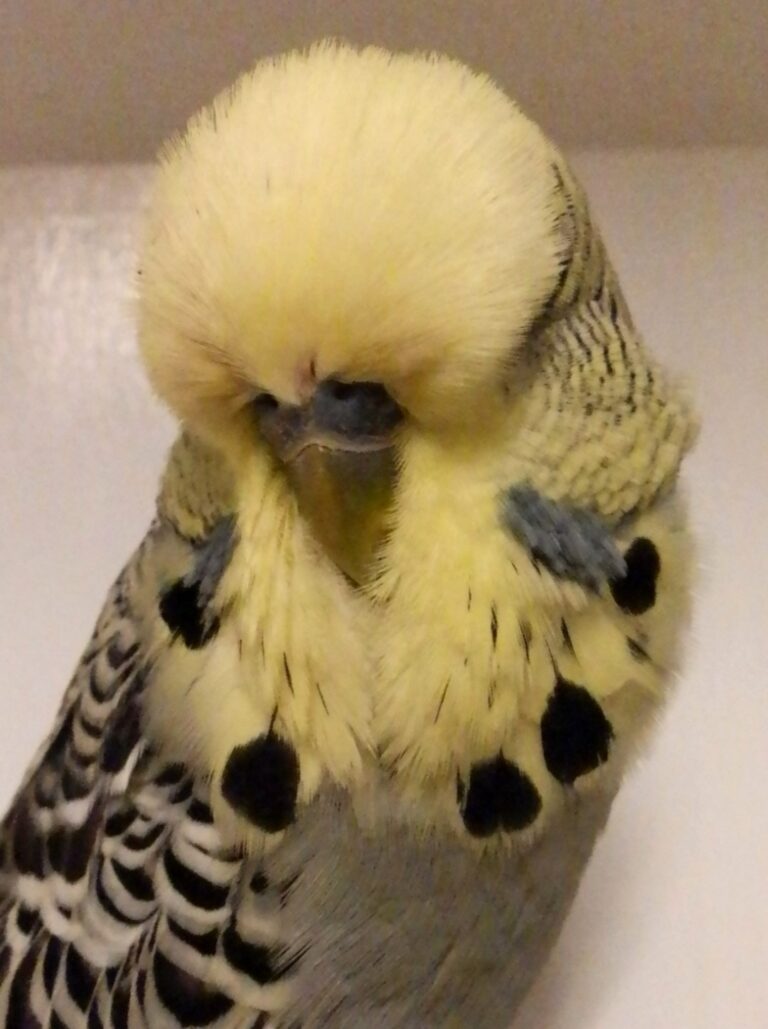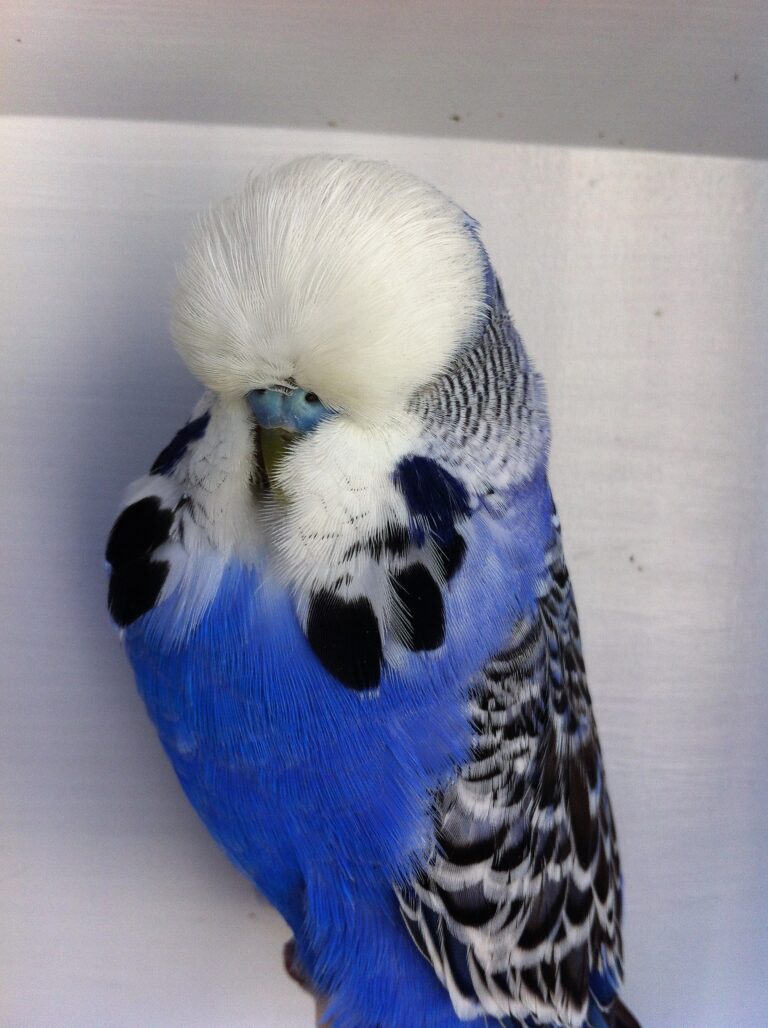North East Budgerigar Society
Linkage and the Dark Factor
John Mulley, December 2021
Linkage and the Dark Factor download
The following explains the well-known phenomenon of maximising production of Cobalts from Dark Greens split for Blue in relation to any of the varieties that display these colours. The discussion requires an understanding of genetic linkage between the Colour gene that determines the amount of yellow pigment and the gene encoding the Dark Factor. Both genes reside on the same chromosome and are located reasonably close on the DNA molecule that runs the entire length of that chromosome. Both genes obey Mendel’s first law of segregation, but because they are loosely linked (closer than 50 map units apart on the same chromosome) they do not obey his second law, of independent assortment. Two genes need to be more than 50 map units apart on the same chromosome or on different chromosomes to assort independently. Although the following will be based on just the Type I and Type II dark green split blues, the same principle applies if we substitute Golden Faced Blue, Yellow Faced Blue and Australian White Cap mutations of the Colour gene in place of the Blue mutation. Breeding the preferred Double Factor Golden Faced Blue can lead to an excess of Sky Blue or Mauve Double Factor Golden Faced Blues depending upon the linkage phase between the Golden Faced Blue and the Dark Factor mutations.
Genetic linkage is the coinheritance more often than due to chance of alleles from two genes where the two genes are in proximity on the same chromosome. Alleles are simply alternative forms of the same gene, with an allele residing on each homologue of a chromosome pair. Hence any given gene can have two alleles in any budgerigar, except for sex-linked genes where hens in budgerigars carry only one allele. Budgerigars have at least 26 chromosomes in at least 13 pairs.
A locus is simply the position of a gene on a chromosome. Not only are variations at the Colour gene locus and the Dark Factor gene locus on the same chromosome but they are close enough such that the crossover frequency between them is reduced. Alternative alleles at each locus therefore do not assort independently. Hence green or blue and presence or absence of dark factor are not inherited independently despite being encoded by separate genes.
Mendel’s second law states that there is independent assortment of alleles at different loci. Whilst this is generally true it does not hold when the two loci involved are linked, separated by less than 50 map units. If the locus determining Green or Blue (alternative alleles at the same locus) was not linked to the Dark Factor locus then from the following pair of budgerigars we would expect:
Dark Green/Blue X Sky Blue 25% Dark Green/Blue
25% Light Green/Blue
25% Cobalt
25% Sky Blue
However, this is not what is observed. The recombination frequency between the Colour gene and the Dark Factor gene is 14% due to interference during chiasma formation at meiosis (not 50% as with independent assortment which is usually the case for any two
randomly chosen loci, and the situation upon which Mendel based his law of independent
assortment).
What we do get from the above pairing is one of two alternatives:
(1) Alternative 1
Dark Green/Blue Type I X Sky Blue: 43% Dark Green/Blue
7% Light Green/Blue
7% Cobalt
43% Sky Blue
(2) Alternative 2
Dark Green/Blue Type II X Sky Blue: 7% Dark green/Blue
43% Light Green/Blue
43% Cobalt
7% Sky Blue
Note that the Dark Green/Blue in one case is Type I and in the other is Type II. Type I birds
inherit the Dark Factor from a Green parent and Type II birds inherit the Dark Factor from a
Blue parent. Note also that 50% of the offspring remain as Blue and 50% remain as Dark
Factor, so Mendel’s first law that describes segregation at individual loci remains unviolated.
It is only the assortment of pairs of alleles from different loci which is perturbed.
Type I dark green/blue birds have the “green” and “dark” alleles on one chromosome
homologue and the “blue” and “not dark” alleles on the other chromosome homologue:
G D where G = green, g = blue
—–x———x—— D = dark factor, d = no dark factor
—–x———x——
g d
G and D are transmitted together more often than expected by chance and g and d are
transmitted together more often than expected by chance, because of reduced crossover
frequency between the two loci, due to their proximity on the same chromosome. Hence the
greater frequency of Dark Greens and Sky Blues when the Dark Green/Blue parent is Type I
(Alternative 1). Light Greens and Cobalts are only obtained when recombination has
occurred between the two closely linked loci.
Type II Dark Green/Blue birds have the “green” and “not dark” alleles on one chromosome
homologue and the “blue” and “dark” alleles on the other chromosome homologue, a
distribution which is different to that shown above for the Type I Dark Green/Blues:
G d
—–x———x—— where G = green, g = blue
—–x———x—— D = dark factor, d = no dark factor
g D
Hence, the greater frequency of Light Greens and Cobalts when the Dark Green/Blue parent is Type II (Alternative 2).
How do you know in the absence of breeding records (eg if you have purchased the bird) if your Dark Green/Blue is Type I or Type II? Simply mate them to a sky blue and see whether the distribution of offspring fits Alternative 1 or Alternative 2.
How do you produce Type I or Type II birds with certainty? Simply mate Olive to Sky Blue and all offspring will be Dark Green/Blue Type I. Mate Mauve to Light green and all offspring will again be Dark Green/Blue, but this time they will all be Type II.
One problem might be finding suitable quality Olives and Mauves. Another problem might be mixing with Single factor Violet which can mimic the appearance of Dark Factor.


